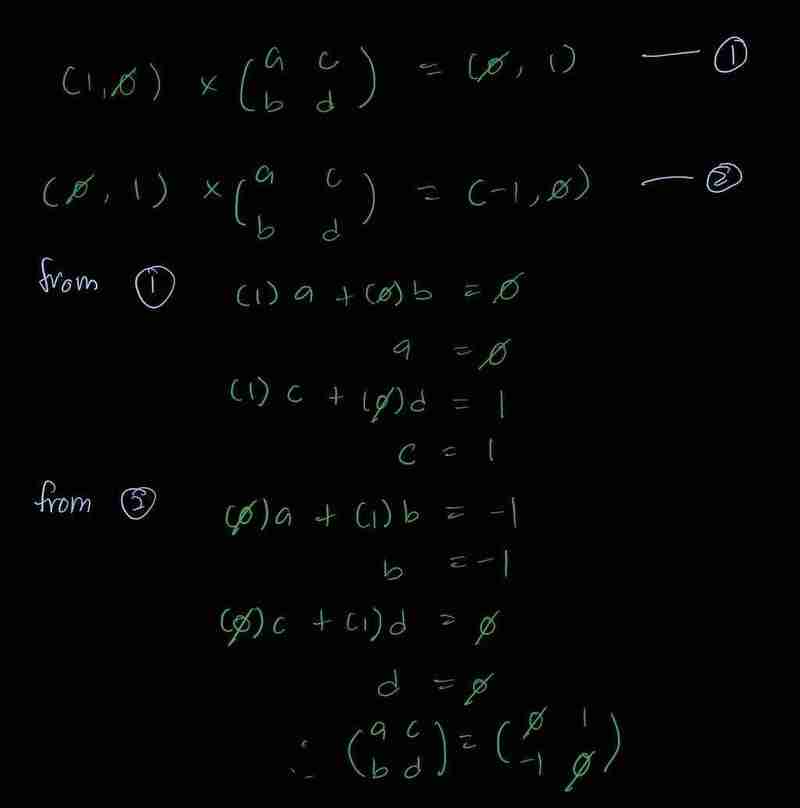如何在地图中追踪步骤,代码降临 ay 6
时间:2025-01-15 13:24:43 224浏览 收藏
来到golang学习网的大家,相信都是编程学习爱好者,希望在这里学习文章相关编程知识。下面本篇文章就来带大家聊聊《如何在地图中追踪步骤,代码降临 ay 6》,介绍一下,希望对大家的知识积累有所帮助,助力实战开发!
Advent of Code 2024: Day 6 - Guard Patrol Optimization
I'm a bit behind on my Advent of Code challenges this year due to unforeseen circumstances, about 5-6 days behind. However, I'm determined to complete the puzzles! Today, let's tackle puzzle six.

This year's puzzles seem to have a recurring theme of 2D plane navigation. Today, we're tracking the movements of a guard with a clear, deterministic movement logic: the guard moves in a straight line, turning right when encountering an obstacle.
Representing each step as a point in a 2D plane, we can define movement directions as vectors:
<code>left = (1, 0) right = (-1, 0) up = (0, -1) down = (0, 1)</code>
A rotation matrix representing a right turn is derived as follows:

Initially implemented as a dictionary for ease of use, I've refined it with type hints for improved code clarity and maintainability:
def check_is_passable(board: Board, point: Point) -> bool:
return not isinstance(board.tiles.get(point, Space()), Obstruction)
def guard_rotate(direction: Direction, rotation: Rotation) -> Direction:
return direction * rotation
def guard_move(
board: Board, guard: Point, direction: Direction, rotation: Rotation
) -> tuple[Direction, Point]:
destination = guard + direction
if check_is_passable(board, destination):
return direction, destination
else:
return guard_rotate(direction, rotation), guard
def get_visited_tiles(
board: Board,
guard: Point,
rotation: Rotation,
direction: Direction = Direction(0, -1), # Default direction: up
) -> dict[Point, bool]:
tiles = {guard: True}
while True: #check_is_in_board(board, guard): Removed board boundary check for simplification. Assume board is large enough.
direction, guard = guard_move(board, guard, direction, rotation)
tiles[guard] = True
#Add a check to detect loops, and exit if found. This prevents infinite loops. (Implementation omitted for brevity)
return tiles
def part1(input: str) -> int:
board, guard = parse(input)
return len(get_visited_tiles(board, guard, RotateRight()))
Part 2: Finding a location to place a new object to create a loop in the guard's patrol.
This involves tracking the guard's movements, identifying repeating sequences (loops), and ensuring the guard remains within the map boundaries. (Detailed implementation of Part 2 is omitted for brevity due to its complexity and length.) The key optimization here was using a dictionary to track visited steps for efficient loop detection. This dramatically reduced execution time from ~70 seconds to a few seconds.
My job search continues (#opentowork). I hope for better results next year. More updates next week.
理论要掌握,实操不能落!以上关于《如何在地图中追踪步骤,代码降临 ay 6》的详细介绍,大家都掌握了吧!如果想要继续提升自己的能力,那么就来关注golang学习网公众号吧!
-
501 收藏
-
501 收藏
-
501 收藏
-
501 收藏
-
501 收藏
-
318 收藏
-
487 收藏
-
311 收藏
-
485 收藏
-
121 收藏
-
234 收藏
-
262 收藏
-
468 收藏
-
442 收藏
-
111 收藏
-
138 收藏
-
216 收藏
-

- 前端进阶之JavaScript设计模式
- 设计模式是开发人员在软件开发过程中面临一般问题时的解决方案,代表了最佳的实践。本课程的主打内容包括JS常见设计模式以及具体应用场景,打造一站式知识长龙服务,适合有JS基础的同学学习。
- 立即学习 543次学习
-

- GO语言核心编程课程
- 本课程采用真实案例,全面具体可落地,从理论到实践,一步一步将GO核心编程技术、编程思想、底层实现融会贯通,使学习者贴近时代脉搏,做IT互联网时代的弄潮儿。
- 立即学习 516次学习
-

- 简单聊聊mysql8与网络通信
- 如有问题加微信:Le-studyg;在课程中,我们将首先介绍MySQL8的新特性,包括性能优化、安全增强、新数据类型等,帮助学生快速熟悉MySQL8的最新功能。接着,我们将深入解析MySQL的网络通信机制,包括协议、连接管理、数据传输等,让
- 立即学习 500次学习
-

- JavaScript正则表达式基础与实战
- 在任何一门编程语言中,正则表达式,都是一项重要的知识,它提供了高效的字符串匹配与捕获机制,可以极大的简化程序设计。
- 立即学习 487次学习
-

- 从零制作响应式网站—Grid布局
- 本系列教程将展示从零制作一个假想的网络科技公司官网,分为导航,轮播,关于我们,成功案例,服务流程,团队介绍,数据部分,公司动态,底部信息等内容区块。网站整体采用CSSGrid布局,支持响应式,有流畅过渡和展现动画。
- 立即学习 485次学习
